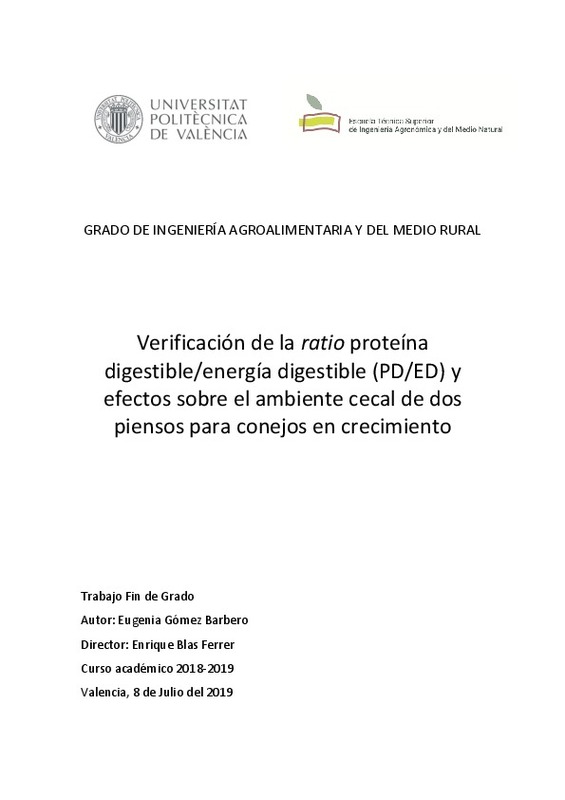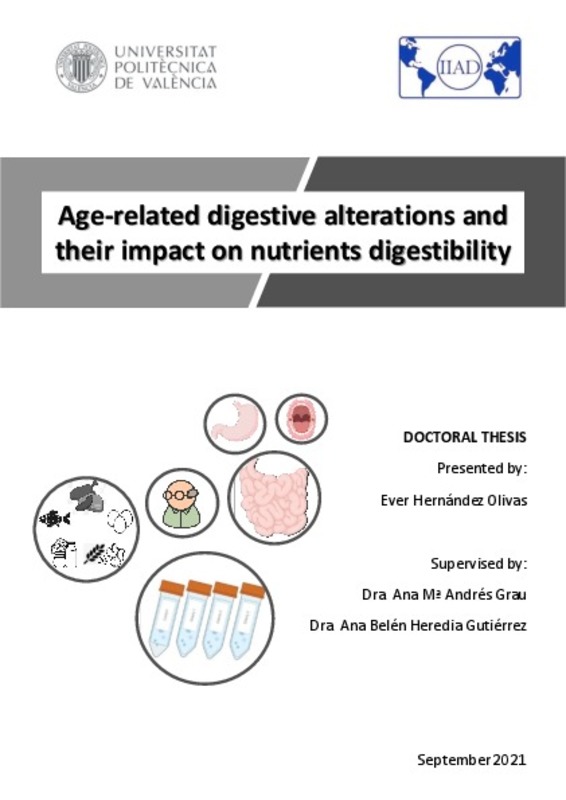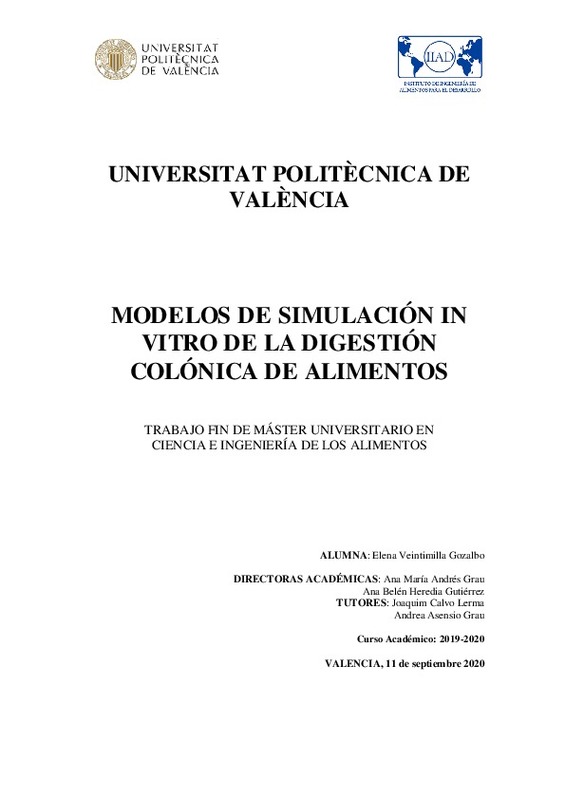|
Resumen:
|
[ES] Los objetivos del presente trabajo fueron: i) verificar la ratio PD/ED de dos piensos para conejos en crecimiento y, ii) comprobar los posibles efectos de esta variación dietaría sobre el ambiente cecal. Para ...[+]
[ES] Los objetivos del presente trabajo fueron: i) verificar la ratio PD/ED de dos piensos para conejos en crecimiento y, ii) comprobar los posibles efectos de esta variación dietaría sobre el ambiente cecal. Para ello, se formularon (con las tablas de composición y valor nutritivo de los alimentos habitualmente utilizadas en España) y fabricaron dos piensos experimentales. El pienso B se formuló para tener una ratio PD/ED habitualmente recomendada en los piensos para conejos de engorde (10,5g/MJ). El pienso A se formuló para tener una ratio PD/ED más alta (12,0 g/MJ), sustituyendo la harina de soja 44 por concentrado proteico de soja.Se utilizaron en total 102 gazapos destetados (28 días de vida) de la línea R de la Universidad Politécnica de Valencia, que se alojaron en jaulas individuales y tuvieron libre acceso al pienso correspondiente y al agua durante todo el experimento. Se utilizaron 48 animales (49 a 53 días de vida) para ensayos de digestibilidad (26 en el primer ensayo, 13/pienso; 22 enel segundo ensayo, 11/pienso) y 54 animales (42 días de vida) para valorar el ambiente cecal (27/pienso), distribuidos en tres lotes (de 24, 22 y 8 animales cada uno). Como resultado de la sustitución de harina de soja 44 por concentrado proteico de soja, se aumentó la ratioPD/ED del pienso, aunque los valores obtenidos (10,3 y 11,7 g/MJ, para el pienso B y el pienso A, respectivamente) estuvieron ligeramente por debajo de los valores previstos.Para tratar de ajustarlas aún más, las fórmulas iniciales se corrigieronligeramente, sustituyendo en ambas 0,6% de heno de alfalfa por 0,6% de concentrado proteico de soja. Sin embargo, la ratio PD/ED de los piensos corregidos aumentó más de lo esperado, aunque las diferencias entre ambos piensos se mantuvieron (11,2 y 12,6 g/MJ, para el pienso B y el pienso A, respectivamente). Estos resultados serían fruto del error asociado a las distintas fases del experimento (fabricación de los piensos, toma de muestras de los piensos, ensayos de digestibilidad,constitucióny toma de muestras de los pooles de heces, análisis de PB y EB).Por otro lado, el pienso no afectó a ninguna de las variables que conforman el ambiente cecal (MS, pH, AGV y NH3), confirmándose la hipótesis inicial.
[-]
[EN] The objectives of the present study were: i) to verify the DP/DE ratio of two feed for growing rabbits and ii) to check the possible effects of this dietary variation on the caecal environment.To do this, ...[+]
[EN] The objectives of the present study were: i) to verify the DP/DE ratio of two feed for growing rabbits and ii) to check the possible effects of this dietary variation on the caecal environment.To do this, two feeds were formulated (with the tables of composition and nutritional value offeedstuffs commonly used in Spain) and manufactured. Feed B was formulated to have a DP/ DEratiousually recommended for growing rabbits (10.5g/MJ). Feed A was formulated to have a higher DP/DEratio(12.0 g/MJ), replacing soybean meal 44 with soy protein concentrate.A total of 102 weaned rabbits (28 day-old) were used from the R line of the Polytechnic University of Valencia, which were housed in individual cages and had free access to the corresponding feed and water throughout the experiment. Of them, 48 animals (49 to 53 day-old) were used for digestibility trials(26 in the first trial, 13/feed, 22 in the second trial, 11/feed) and 54 animals (42 day-old) to assess the caecal environment (27/feed), distributed in three batches (24, 22 and 8 animals each).As a result of replacing soybean meal 44 with soy protein concentrate, the DP/DEratioincreased, although the values obtained (10.3 and 11.7 g/MJ, for feed B and feed A, respectively) were slightly below the predicted values.Trying to adjust them further, the initial formulas were slightlycorrected, substituting in both 0.6% alfalfa hay for 0.6% soybean protein concentrate. However, the DP/DEratioof the corrected feeds increased more than expected, although the differences between the two feeds remained (11.2 and 12.6 g/MJ,for feed B and feed A, respectively). These results would be a consequence of the error associated to the different phases of the experiment (feed manufacturing, feed sampling, digestibility trials, constitution and sampling of faecal pools, CPand GEanalysis).On the other hand, the feed did not affect any of the variables determining the caecal environment (DM, pH, VFAand NH3), confirming the initial hypothesis.
[-]
|










